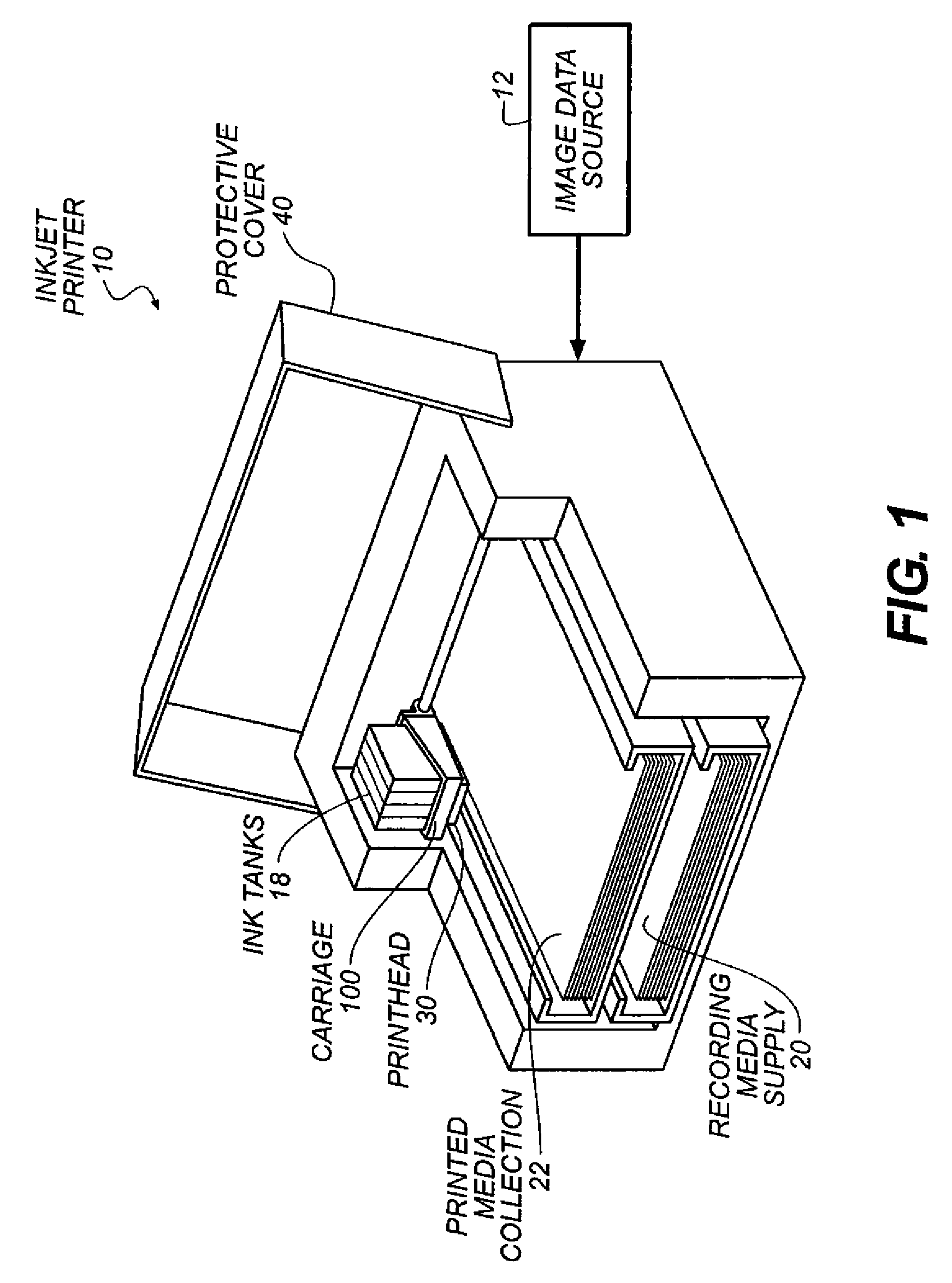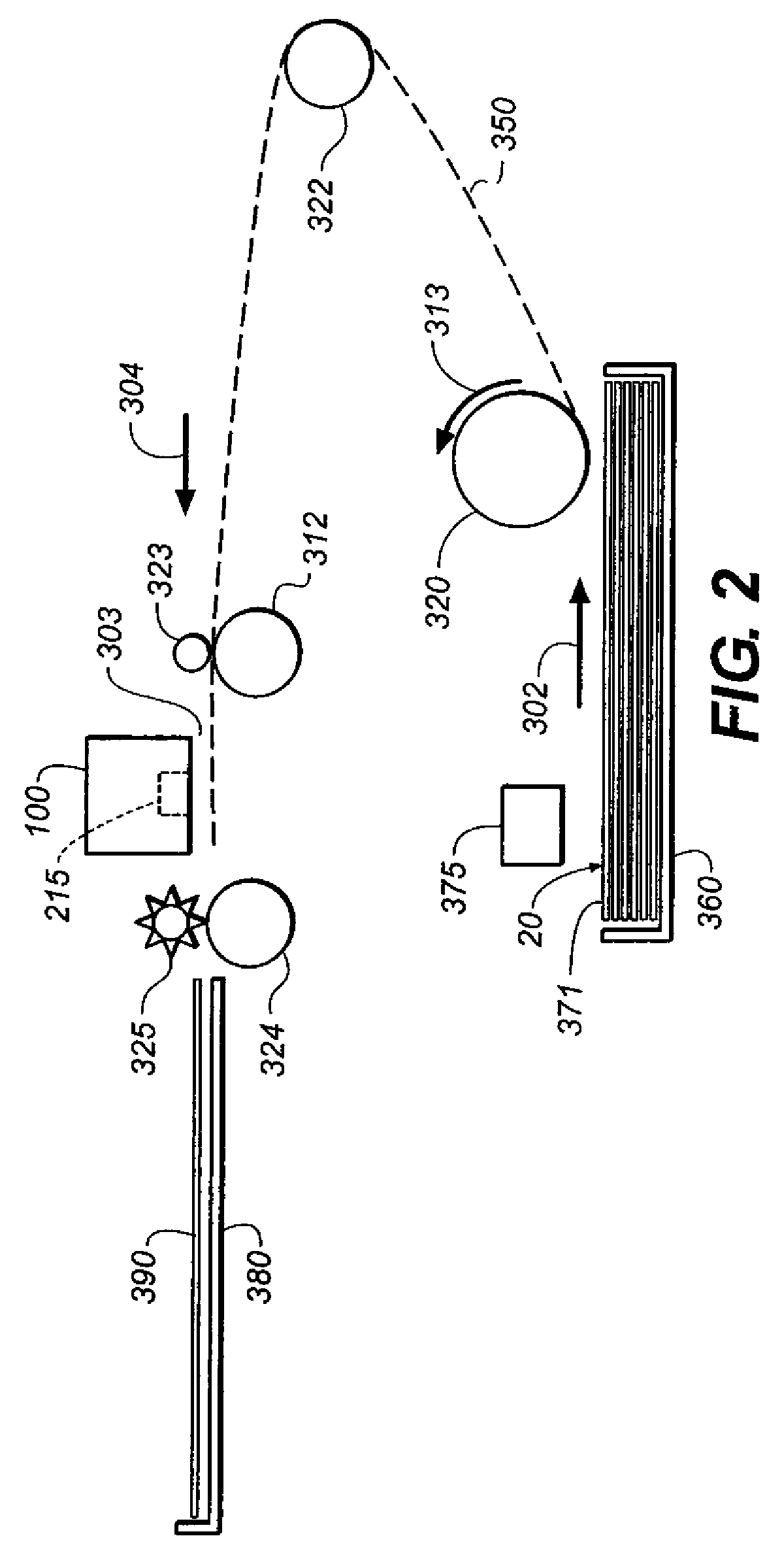Inkjet media system with improved image quality
a technology of inkjet media and image quality, applied in the field of coating inkjet receiver media, can solve the problems of slow drying of the receiver, inconvenient handling until, and the imaged receiver or print is not instantaneously dry to the touch, etc., and achieves the effects of reducing coalescence and mottle, excellent image quality, and high gloss
- Summary
- Abstract
- Description
- Claims
- Application Information
AI Technical Summary
Benefits of technology
Problems solved by technology
Method used
Image
Examples
example 1
Comparative
[0106]Inkjet receivers according to structure I were prepared. Aqueous coating compositions 1 through 9 were prepared at 23% solids by weight comprising clay particles (HYDRAGLOSS 90, Huber), fumed silica particles (AEROSIL 200, Evonik), polyvinyl alcohol (saponification degree ca. 80% GOHSENOL KH-20, Nippon Gohsei), first surfactant (alkyl poly glucoside, APG-325, Cognis), second surfactant (non-ionic fluorosurfactant, ZONYL FS-300, DuPont), in a weight ratio of 750 / 250 / 40 / 3.5 / 10. Additionally, a water-soluble salt of a multivalent cation was dissolved in the compositions. Table 1 shows the identity and relative amount of salt added to compositions 1 through 9. The compositions were coated onto a low-size paper of 151 g basis weight by a bead coating method and dried to produce coatings 1 through 9.
[0107]
TABLE 1CoatingSaltmmol / m21None—2CaCl2*2H2O4.33CaCl2*2H2O7.54CaCl2*2H2O10.85CaCl2*2H2O15.16MgCl2*6H2O4.37MgCl2*6H2O7.58MgCl2*6H2O10.89MgCl2*6H2O15.1
[0108]Samples of dried...
example 2
[0115]Coatings 11 though 31 were prepared as in Example 1, except that additional types of salts were investigated. The salts comprised multivalent metal cations with multivalent anions capable of chelating metal ions. Magnesium citrate (Mg3(C6H5O7)2.9H2O) is not sufficiently soluble for direct addition to coating compositions In this case, magnesium chloride and sodium citrate were added separately in amounts sufficient to provide the desired amount of each species in the coating. The formation constant K1 of the 1:1 complexes were obtained from Chemistry of the Metal Chelate Compounds, A. E. Martel and M. Calvin, Prentice Hall, Englewood Cliffs, N.J., 1952). Samples of the coatings were printed as in Example 1 and the green patch at Step 200 (ink laydown of 21.0 mL / m2 was evaluated for coalescence and 60-degree gloss as in Comparative Example 1. The results of the evaluations are shown in Table 4.
[0116]
TABLE 4mmol / Coales-CoatingSaltK1m2GlosscenceType11None——805Comp12MgCl2*6H2O—4.3...
example 3
[0125]An inkjet receiver comprising a top layer and a base layer was prepared on a polyethylene resin-coated (RC) paper support to produce a first-tier glossy photo paper similar to KODAK Ultra Premium Photo Paper, except that the base layer thickness and capacity were reduced by approximately one-half. The coating composition for the base layer comprised colloidal alumina particles (CATAPAL 200, 140 nm diameter, Sasol), poly (vinyl alcohol) (saponification degree 88, GOHSENOL GH-23, Nippon Gohsei), cross-linking compound glyoxal (CARTABOND GHF, Clariant) and boric acid, and surfactant (non-ionic, OLIN 10 G, Olin) in a relative weight ratio of 95.0 / 4.5 / 0.13 / 0.25. The base layer coating composition comprised 32% solids and was coated at 34.4 g solids / m2. The coating composition for the top layer comprised fumed alumina particles (PG-008, 130 nm diameter, Cabot), poly (vinyl alcohol) (GOHSENOL GH-23, Nippon Gohsei), latex dispersion of polymeric cationic mordant as described in U.S. P...
PUM
| Property | Measurement | Unit |
|---|---|---|
| mole ratio | aaaaa | aaaaa |
| mole ratio | aaaaa | aaaaa |
| static surface tension | aaaaa | aaaaa |
Abstract
Description
Claims
Application Information
 Login to View More
Login to View More - R&D
- Intellectual Property
- Life Sciences
- Materials
- Tech Scout
- Unparalleled Data Quality
- Higher Quality Content
- 60% Fewer Hallucinations
Browse by: Latest US Patents, China's latest patents, Technical Efficacy Thesaurus, Application Domain, Technology Topic, Popular Technical Reports.
© 2025 PatSnap. All rights reserved.Legal|Privacy policy|Modern Slavery Act Transparency Statement|Sitemap|About US| Contact US: help@patsnap.com


